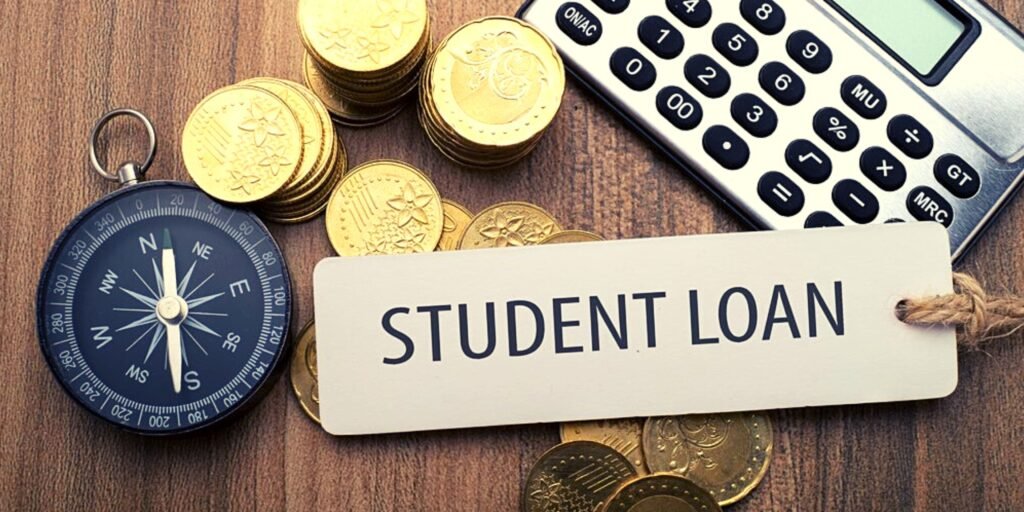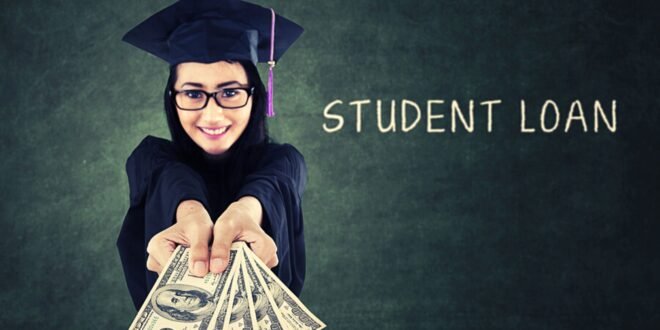Introduction
Student Loan debt Relief Supreme Court
In recent years, Student Loan debt Relief Supreme Court student loan debt relief has gained significant attention, reaching even the highest levels of judicial consideration. The Student Loan debt Relief Supreme Court Supreme Court’s involvement in this matter has brought the topic to the forefront of public discourse. This article delves into Student Loan debt Relief Supreme Court the recent developments surrounding student loan debt relief and the Supreme Court’s role in shaping the future of this critical issue.
Student loan debt has reached unprecedented levels, affecting millions of individuals pursuing higher education. The sheer magnitude Student Loan debt Relief Supreme Court of this issue has spurred discussions about finding viable solutions to ease the financial burden on borrowers. One avenue that has gained attention is student loan debt relief, which aims to provide individuals with pathways to manage, reduce, or eliminate Student Loan debt Relief Supreme Court their debt obligations. Over the years, the Supreme Court has heard cases that have had a profound impact on the development of student loan debt relief policies. These cases Student Loan debt Relief Supreme Court have revolved around issues such as federal authority, the rights of borrowers, and the obligations of educational institutions.
Rising Costs of Higher Education
The cost of higher education Student Loan debt Relief Supreme Court has soared over the past few decades, leaving countless students burdened with substantial debt. As tuition fees continue to rise, the dream of obtaining a degree Student Loan debt Relief Supreme Court and securing a better future has become increasingly elusive for many. The responsibility of addressing the student loan debt crisis extends to Congress, which holds the power to Student Loan debt Relief Supreme Court enact legislation that shapes the landscape of student loan debt relief. Debates within Congress have centered on the feasibility of various relief measures, Student Loan debt Relief Supreme Court their economic implications, Student Loan debt Relief Supreme Court and their potential to promote equal access to education.
Student Loan debt Relief Supreme Court
The Weight on Borrowers
Student loan debt has far-reaching consequences on borrowers’ lives. Graduates often face monthly payments that rival mortgage installments, making it challenging to achieve other financial milestones, such as buying a home or saving for retirement.
Student Loan debt Relief Supreme Court
Introduction of Debt Forgiveness
To address the growing student loan crisis, I have introduced various debt relief programs. These programs aim to ease the financial strain on borrowers by offering partial or complete forgiveness of their student loans, usually after a specified period of consistent payments.
Student Loan debt Relief Supreme Court
Eligibility Criteria and Challenges
While debt relief programs hold promise, they often come with stringent eligibility criteria and administrative complexities. Navigating through these requirements can be daunting for borrowers, and it may exclude much from benefiting because of technicalities.
Student Loan debt Relief Supreme Court
Legal Battles and Interpretations
They have contested the legality of certain aspects of student loan debt relief programs in the courts. Some argue that these programs exceed the government’s authority, while others assert they are necessary for ensuring equal access to education.
Supreme Court’s Review
Recent developments have led to the Supreme Court reviewing the constitutionality of specific provisions within student loan debt relief programs. The court’s decisions could have far-reaching implications, shaping the future of higher education financing and debt alleviation.
Economic Ramifications
Critics of extensive student loan debt relief complaining about potential economic ramifications. They argue that widespread forgiveness could lead to increased taxpayer burden and diminished funds for other essential public services.
Social and Generational Equity
Proponents of debt relief emphasize the need to address social and generational equity. They argue that the burden of student loan debt disproportionately affects certain demographics, hindering social mobility and perpetuating economic disparities.

Potential Reform Measures
Considering the ongoing legal debates, policymakers are exploring alternative paths to student loan debt relief. These may include income-based repayment plans, tuition reform, and increased government funding for higher education.
Collaborative Solutions
Finding a balanced solution to the student loan debt crisis requires collaboration between legislators, educators, financial institutions, and students themselves. By working together, stakeholders can develop comprehensive strategies that promote both access to education and financial stability.
Escalating Costs of Higher Education
The pursuit of a college education, once considered a gateway to success, has become accompanied by skyrocketing tuition fees and related expenses. This escalation in costs has left countless students burdened with a substantial debt upon graduation, making the promise of a brighter future appear increasingly elusive.
Economic and Social Consequences
The weight of student loan debt extends beyond the financial realm, affecting various aspects of borrowers’ lives. Graduates often find themselves shackled by monthly payments that hinder their ability to achieve significant milestones such as homeownership, starting families, or saving for retirement. This situation has sparked concerns about broader economic implications and social mobility.
Addressing the Crisis Debt Forgiveness
In response to the escalating student loan crisis, government-starting debt relief programs have been introduced. These programs aim to ease the financial burden on borrowers by offering various forms of debt forgiveness, often contingent on consistent payments.
Complex Eligibility Criteria
While debt relief programs offer a glimmer of hope, navigating the eligibility criteria can be complex and daunting for borrowers. Stringent requirements, varying program structures, and intricate paperwork pose significant challenges, potentially leaving deserving individuals without access to relief.
Clashing Legal Interpretations
The legality of certain aspects of student loan debt relief programs has sparked heated debates within the legal community. Some argue that these programs exceed the government’s authority, while others contend they are essential for ensuring fair access to education and opportunities.
Supreme Court’s Judicial Review
Recent legal developments have propelled specific provisions of student loan debt relief programs into the Supreme Court’s chambers. The court’s involvement brings to the forefront questions of constitutionality, government power, and the balance between individual and societal interests.
Economic Ramifications and Fiscal Concerns
Critics of expansive student loan debt relief complaining about potential economic fallout. They posit that widespread debt forgiveness could place an excessive burden on taxpayers, potentially redirecting funds from other critical public services.
Equity and Societal Impact
Proponents of debt relief emphasize the dire need to address equity and societal impact. They argue that the student debt crisis disproportionately affects marginalized communities, hindering social mobility, exacerbating wealth inequality, and perpetuating systemic disparities.

Exploring Policy Alternatives
Given the legal battles and debates surrounding student loan debt relief, policymakers are exploring alternative avenues. These include income-based repayment plans, tuition reforms, increased government funding for higher education, and innovations in loan structuring.
Collaborative Solutions
The complexity of the student loan debt crisis demands collaboration among various stakeholders, including legislators, educators, financial institutions, and students themselves. Through collective efforts, they can devise comprehensive solutions that balance accessibility to education with responsible debt management.
Defining Student Loan Debt Relief
At its core, student loan debt relief encompasses strategies to mitigate the financial strain experienced by borrowers who have taken out loans to fund their education. This relief can take several forms, including:
Debt Forgiveness: Partial or complete forgiveness of outstanding student loan debt after borrowers meet certain criteria, such as making a certain number of payments or working in specific fields.
Income-Driven Repayment Plans: Repayment plans that adjust monthly payments based on borrowers’ income, ensuring that payments remain manageable even in cases of lower earnings.
Lowering the interest rates on student loans to reduce the overall cost of repayment.
Loan Restructuring: changing the terms of loans, such as extending the repayment period or adjusting interest rates, to make monthly payments more affordable.
The Role of the Supreme Court
The involvement of the Supreme Court in the student loan debt relief issue centers on the legal and constitutional aspects of these relief programs. Various legal challenges have arisen, questioning the authority of the government to implement such programs and the potential conflicts between federal and state regulations.
The Supreme Court’s role includes
Constitutional Review: Examining whether implementing certain student loan debt relief programs adheres to the Constitution and the separation of powers between branches of government.
Government Authority: Evaluating whether the government has the authority to introduce and execute debt relief programs without overstepping its jurisdiction.
Equity and Fairness: Weighing the implications of debt relief programs on different segments of society, considering both the rights of borrowers and the potential impact on taxpayers.
The Implications of Supreme Court Decisions
Supreme Court decisions regarding student loan debt relief hold significant implications for multiple stakeholders
The legality of debt relief programs determines whether borrowers can access the promised relief. Decisions may impact their financial well-being and future opportunities.
Government: Rulings affect the government’s ability to create and implement policies aimed at addressing the student loan crisis. This includes decisions about the extent of government intervention.
Financial Institutions: The outcomes of legal cases can influence the relationships between lenders, borrowers, and government bodies, potentially altering lending practices and terms.
Economy: The economic consequences of widespread debt relief, as evaluated by the Supreme Court, could impact fiscal policies, taxpayer obligations, and resource allocation.
Education System: Decisions could shape the financial landscape of higher education, influencing tuition fees, availability of loans, and the attractiveness of pursuing advanced degrees.
Conclusion
The Supreme Court’s involvement in the student loan debt relief issue marks a pivotal moment in the ongoing conversation about higher education accessibility and financial burdens. As legal battles continue and policy changes are considered, the nation watches closely, hoping for a resolution that addresses the needs of both borrowers and the broader society.
The involvement of the Supreme Court in the student loan debt relief discourse reflects the gravity of the issue. As legal deliberations continue and policy directions take shape, the nation watches closely. The decisions made to hold the potential to redefine the trajectory of higher education financing, debt relief, and Poseidon the American dream.
FAQs
What is student loan debt relief?
Student loan debt relief refers to programs or policies aimed at reducing or eliminating the financial burden of student loans for borrowers.
Why is student loan debt a concern?
Student loan debt can have long-term negative effects on borrowers’ financial well-being, hindering their ability to achieve important life milestones.
What role does the Supreme Court play in this issue?
The Supreme Court reviews legal challenges to student loan debt relief programs, making decisions that can impact their constitutionality and implementation.
Are there alternatives to widespread debt relief?
Yes, alternatives include income-based repayment plans, educational funding reforms, and collaborations between stakeholders.
How can collaborative solutions benefit the situation?
Collaborative solutions bring together diverse perspectives to create comprehensive strategies that address the complexities of student loan debt and higher education.
What is student loan debt relief?
Student loan debt relief refers to programs or policies designed to reduce or eliminate the financial burden of student loans for borrowers.
Why is the Supreme Court involved in student loan debt relief?
The Supreme Court reviews legal challenges to student loan debt relief programs to determine their constitutionality and potential impact on governance.
What are the economic implications of student loan debt relief?
Widespread debt relief could lead to economic consequences, potentially impacting taxpayer burdens and the allocation of public funds.
How does student loan debt affect societal equity?
Student loan debt exacerbates societal inequities by disproportionately affecting marginalized communities and hindering social mobility.
What are some alternatives to widespread debt relief?
Alternatives include income-based repayment plans, reformation of tuition structures, increased government funding for education, and collaborative approaches among stakeholders.
 Insu Edu Tech Insurance, Education & Technology
Insu Edu Tech Insurance, Education & Technology




